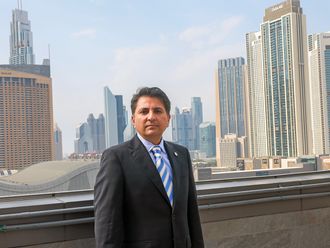Dubai: The overall technology trends in the Middle East will be driven by doing more with less this year. The overall economic climate in the region will drive digital transformation in a way that organisations will focus more out of what they spend.
Ali Merji, senior director at Analyst at Gartner, told Gulf News that artificial intelligence, blockchain, augmented reality/virtual reality and the Internet of Things, which was seen more on the experimental side in 2018, will lead to more business-focused projects.
“Organisations need to start creating more focused on strategies and innovation road maps to build capacity and skills internally. The same technologies seen in 2018 will move out of innovation and towards becoming more business-oriented,” he said.
The ICT spending in the UAE is expected to increase from $1.63 billion last year to $1.69 billion this year.
AI
It will not have a big impact but will see production roll-out initiatives. Companies will create projects that have value in it. AI will be used in a way in data preparation using AI and machine learning.
According to research firm International Data Corporation, the market size of AI in the UAE is expected to increase to $50.7 million this year (2019) from $35.93 million last year.
The proliferation of AI on the consumer side by the smart devices and conversational platforms is starting to change perceptions of consumers more keen to try out AI-enabled devices and products. It has started to find places among consumers and houses.
AR/VR
Consumer interaction with institutions would start to see more VR and technologies such as video conferencing and virtual technologies to bridge the gap and optimise the interaction with the people. For example, replacing bank branches with virtual branches, video calling systems and virtual interactions with banks or consumer organisations, that is becoming more accessible and consumers are adapting to it.
Conversational platforms are changing the way in which people interact with the digital world. Virtual reality, augmented reality and mixed reality are changing the way in which people perceive the digital world. This combined shift in perception and interaction models leads to the future immersive user experience.
Cloud
Non-critical applications will move on to the public cloud. In the GCC, the opening of new data centres by Oracle and Microsoft will drive adoption.
The overall adoption will depend on more clarity around data residency aspect from the regulators. At the moment, there is a lack of clarity on data regulations within the GCC.
Unless that happens, there will be a struggle to see major adoption in public cloud within the region.
IoT
By 2020, 20 billion devices will be connected globally. Banks have started to utilise data from the IoT for decision making and creating better risk management models and some organisations are creating better revenue models. Manufacturers will be creating new revenue models with IoT data to increase the life of the customer relationship from a one-time model to a subscription-based model.
According to research firm International Data Corporation, the IoT market size in the UAE is expected to increase to $654.36 million this year from $555.48 million last year.
Data breaches
This has been happening for a while now and from the institutional point of view, social media scandals and security breaches will have effectively zero lasting consumer impact through 2021.
The benefit of using digital technologies by consumers will outweigh the potential risk. Despite a fall in ransomware attacks in 2018, attackers have found a new playground — cryptocurrency mining, also known as crypto jacking.
Cryptojacking means hackers are using coin-mining malware to steal the processing power of users’ computers and cloud CPU usage to mine cryptocurrencies.
5G
With massive roll-outs of 5G by regional telecom operators, IoT communications remain the most popular target use case, followed by video, control and automation, fixed wireless access and high-performance edge analytics. From video analytics to collaboration, 5G’s speed and low latency will be well suited to support 4K and 8K video content. Some big TV brands will be launching 8K TVs this year.
Telcos will focus on offering fixed lines for homes as devices will be scarce. Some brands will launch 5G smartphones but it will take off only after 2020. 5G download speeds will transform how people engage with the world overnight. This breakthrough will help mainstream things like driverless cars, smart wearables, gaming, home security and industrial intelligence due to the wide bandwidth.
Smartphones
The usage of smartphones, which till now has been restricted to smartphone screens, will change more to conversational devices. Consumers will be interacting with their smartphones via smart wearables.
Smartphone makers have shifted their focus to next-generation foldable models and the first models from some big brands will hit the shelves this year but the initial demand for foldable smartphones will not be very strong. A Chinese company, Royole, had launched a foldable phone in 2018.
According to research firm WitsView, foldable phones are expected to account for only 0.1 per cent in the global smartphone market this year. The penetration rate is estimated to reach 1.5 per cent in 2021.











